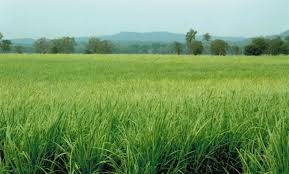By Mary Mwendwa
Up to some 60 percent of global wetlands have been destroyed in the past 100 years as people search for land to settle on, farm and establish several other types of investments.
Wetlands which cover 6 percent of the world’s surface provide a range of environmental services, including water filtration and storage, erosion control, a buffer against flooding, nutrient recycling, biodiversity maintenance, carbon storage and a nursery for fisheries among several others.
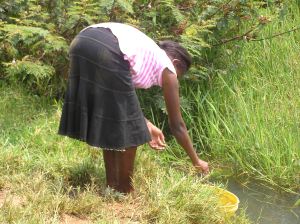
But drainage and destruction of these ecosystems are responsible for large amounts of carbon emissions equivalent to 40 tons of carbon per hectare per year for drained tropical swamp forests as well as degradation of the other services they provide.One of the swamps that have been seriously drained and destroyed is Yala. Yala Swamp is located in western Kenya, on the northeastern shore of Lake Victoria. Yala Swamp is the third-largest wetland ecosystem in Kenya. It covers over 200 square km of Western Kenya.
Yala Wetland might soon be no more.
The beautiful green papyrus vegetation; women riding bicycles loaded with heavy bags of grains and charcoal as they sweat profusely; others with babies clutched on their backs; school children running home for lunch; a water body totally fenced with mesh wire; from a distance a factory emitting smoke from its chimney and tractors harvesting rice in farms are some of the eye-catching doings that attract my attention on a sunny hot and humid day.
This is none other than Yala swamp, a wetland that borders Siaya and Busia counties.
Being a breeding habitat for fish and a purifying body for the water that flows into Lake Victoria, activities that lead to the destruction of the water body may largely reduce fish population in the entire region
It is a home to thousands of rare species of mammals, fish, and birds, internationally recognized as an Important Bird Area (IBA) , with many papyrus endemic bird species which can be found nowhere in the world.
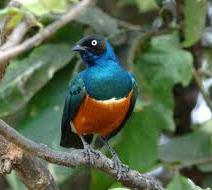
Some of the rare species of birds found here are, Papyrus Yellow Wabler, papyrus Gonolek, White Winged Warbler, Papyrus Canary, Caruthers ‘ Cistola and Northern – Brown Throated weaver among others.
Birdlife International lists the Papyrus Yellow Warbler and Papyrus Gonolek as globally threatened bird species which require urgent conservation action (Birdlife International, IBAs status Report, 2004).
Lake Kanyaboli, a satellite lake of Lake Vitoria, part of Yala swamp forms the mouth of Rivers Nzoia and Yala, also one of the most important riparian lakes around Lake Victoria.
The wetland belonged to the community through a trust land which has been managed for a long by Siaya and Bondo counties. Seje village is part of the neighboring communities that ought to benefit from the swamp; however, this is not the case.
The state of interactions of the living and non – living components at the swamp is worrying.
Mau complex which supplies water through various rivers to this wetland may be a cause to its deteriorating state. Upstream poor farming practices, deforestation and use of pesticides also have a hand in the destruction of Yala swamp.
But most people here accuse Dominion Farms Ltd, a subsidiary of Dominion Group of Companies based in Edmond Oklahoma USA.
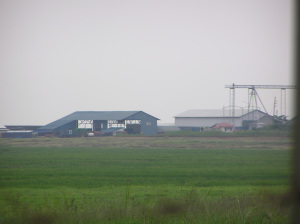
Dominion Farms Ltd moved into the Yala swamp in 2003 through an arrangement with the Lake Basin Development Authority (LBDA). The initial proposal was that Dominion would engage in rice production, in part of the swamp known as Area I, covering about 2,300 ha.
This land portion had been reclaimed before 1970, and previously used by LBDA for agricultural activity, mainly to produce cereals, pulses, and horticultural crops. An environmental impact assessment (EIA) was commissioned for large-scale rice production, for which a license was issued in 2004, specifically for the rice irrigation.
But later Dominion Farms Ltd embarked on other additional agricultural and development activities in the swamp. It is therefore on this basis that the Friends of Yala Swamp Network was established to campaign against the threat to the livelihood of the people of the Yala Swamp Catchment area.
Dominion Farms Ltd – a multimillion company is now carrying out farming on large scale close to this wetland and also owns a paper mill.
These investments are being accused of worsening current state of the swamp. Since 2003 when the Dominion Farms Ltd came in the area, the swamp’s ecological state has been deteriorating day by day, according to Vincent Omondi Obondo, Assistant Programs coordinator for Friends of Yala Swamp Network.
He also alleges that all the effluent from the factory is channeled to the wetland. However, I was not able to verify this independently because I was denied access to the factory.
Institute for Law and environmental governance (ILEG) with other partners have been involved in spearheading community participation in decision making in terms of managing their natural resources.
This is helping the community understand the importance of being part of the decision-making process when managing their swamp.
Many residents here say they are suffering because they were not aware when land was leased to Dominion Farms Ltd. A selected few were part of the process but didn’t understand the implications of this to the Yala swamp.
“We have no rights to access the Yala swamp and use any of its resources, we are like squatters in our land” Charles Okolla, a farmer laments. He further adds that the state of the swamp is worrying. Polluted, full of sediments that come from upstream. “People here get sick of waterborne diseases very often because of the contamination of water from the swamp”.
Charles confirms to me about the frequent community conflicts with the Dominion Farms Ltd.
There is also a problem of boundaries. Many people don’t know their boundaries and at times find themselves encroaching on the swamp land where the Dominion farms have dominated.
Such challenges made Friends of Yala Swamp Network with Institute for Law and Environmental Governance (ILEG); Kenya Land Alliance; Kituo Cha Sheria; Kenya wetlands Forum and other networks to come together and address some of the issues affecting this swamp. These multimillion agencies have fenced off a large part of the swamp where locals cannot access.
But levels of poverty are increasing day by day in this region.
Dominion Farms Ltd is involved in rice farming, fish farming and has a paper mill. All these are employing women largely as casual laborers with an average wage of 1.82 dollars per day.
Mary Atieno, a mother of eight tells me that she works from 8.00 am to 6 pm every day to fetch food for her kids. She says, “I have no choice but to work for that little money because of my kids, if I don’t work here my kids will die of hunger.”
Along the swamp, Scovincer Adhiambo, a teenage girl from Seje, washes her clothes with as other people, both women and men draw water for domestic use.
The first sight is of some smelly effluents floating and foaming scum on the water. I ask her what it is and where it is coming from.
“These chemicals are coming from the Dominion factory, they pollute our water and this makes us very sick often, we have no one to complain to,” she tells me sadly.
She further tells me that longtime ago when she was a child; they used to have plenty of food and fish. These days they have no food, their farms don’t get enough rain and fish is very expensive for them because of its scarcity.
At the same water point Grace Akinyi, a middle-aged woman with her two sons aged 6 and 8 with their jerrycans have come for the same precious commodity, water. The sad state on their faces clearly tells one that something is not right here.
Grace is bitterly complaining about the state of the water. She says her children get very sick when they drink the water before boiling it.
“Sometimes we boil and drink and still we get sick,” she says as she raises her arms up shouting, “ Nyasaye Konya! Nyasaye konya,” which means Lord help us, Lord help us in her local Luo Language.
“People living around Yala swamp are suffering as they watch their only resource dwindle in the hands of an investor,” I think as some sort of tears force themselves out of my open eyes.
Vincent Omondi of Friends of Yala Swamp Network talks about some of the sample tests they have done with other stakeholders on the swamp water. The first sampling they did was in early February 2012.
He notes that the findings indicated high levels of pollution with high concentration elements of lead metal. This could be as a result of effluents from a factory that are discharged in the swamp.
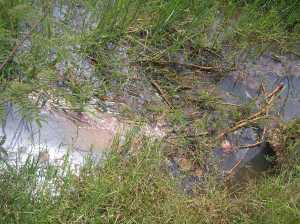
He further tells me they tried to contact the company about it but the company officials were not willing to disclose the type of the chemicals they use which later find their way in the swamp.
No visitor of any journalistic or investigative nature is allowed on the farm premises which are heavily guarded. With my tour assistant, as we move around the fenced swamp, guards placed strategically, monitoring every step we make. I was told by my guide that no one is allowed to take any photograph at the gate of Dominion Farms Ltd.
A warning in capital letters reads, “NO VISITOR IS ALLOWED HERE WITHOUT APPOINTMENT.” Surely this prevented me from independently verifying the allegations made by the local people.
As Kenya struggles to implement various policies on the environment, the wetland policy needs to be addressed urgently to help address the issues affecting many of its water bodies.
This story was first published at Water Journalists Africa (2012)

